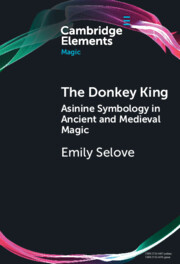Element contents
The Donkey King
Published online by Cambridge University Press: 24 November 2023
Summary
- Type
- Element
- Information
- Series: Elements in MagicOnline ISBN: 9781009076234Publisher: Cambridge University PressPrint publication: 21 December 2023
Bibliography
- 3
- Cited by

